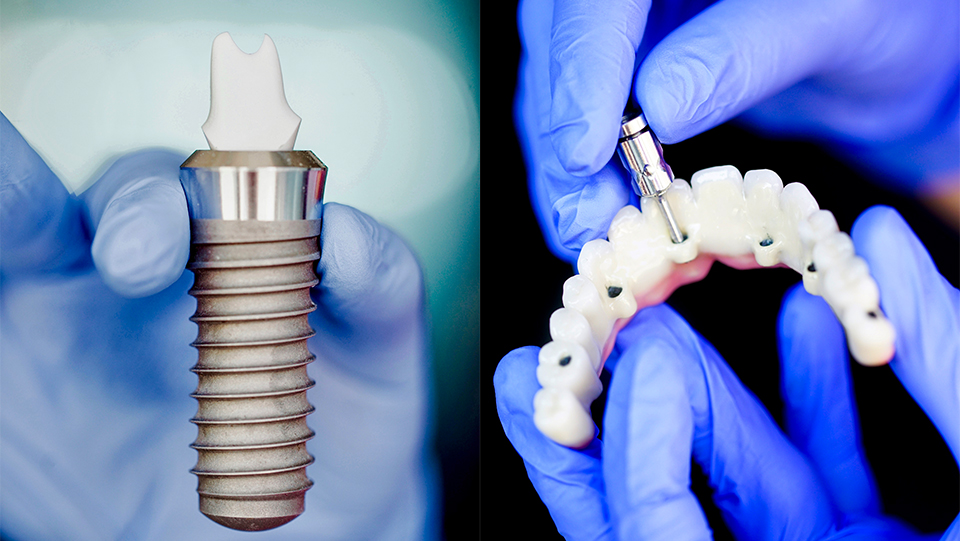Implants are specially designed cylindrical screws intended to replace the root of a tooth. They can replace the lack of one or all teeth of one jaw. One of the most common dilemmas of patients we encounter in everyday practice is whether our body can reject built-in implants.
The implant integration in the bone depends on its chemical, physical and mechanical characteristics, as well as the ability of the material to integrate with bone tissue. The concept of rejection by type of foreign body or tissue refers to the systemic antigen-antibody reaction and occurs with organ and tissue transplantation from one organism to another. When it comes to implants, "rejection" is a reaction of local tissue due to a chronic or acute infection. The cause of implant loss may also be the insufficient quantity and quality of bone, which is solved by the method of targeted bone regeneration, using artificial bone substitutes, membranes or recently even biologically active agents.
Materials that are embedded in the human body are biocompatible, which means that they do not exhibit a toxic, allergic, carcinogenic or radiological effect. On the other hand, the tissues in which they are located do not lead to their corrosion, dissolution or biodegradation. The harmlessness of these materials is proven by biocompatibility evaluation tests.
In implantology, only synthetically synthesized biomaterials are used. For the production of dental implants, the material of choice is titanium. It is a non-precious and highly reactive metal, which means it currently oxidizes in air, in water, and in tissue fluids. This superficial layer of oxide makes it inert and biocompatible. The most important titanium oxide is TiO2 which is resistant to corrosion and bioinert. It is important to note that titanium has no ferromagnetic properties, so doing magnetic resonance imaging is safe, that is, magnetic resonance DOES NOT lead to their movement in the bone.
In addition to titanium as the biologically most suitable material, integration is significantly influenced by the shape of the implant as well as the finishing of its surface which is a significant element of quality in terms of complete integration and long-term function.
Source:
"Oral Implantology", Dr Milan Jurišić et al., 2006


